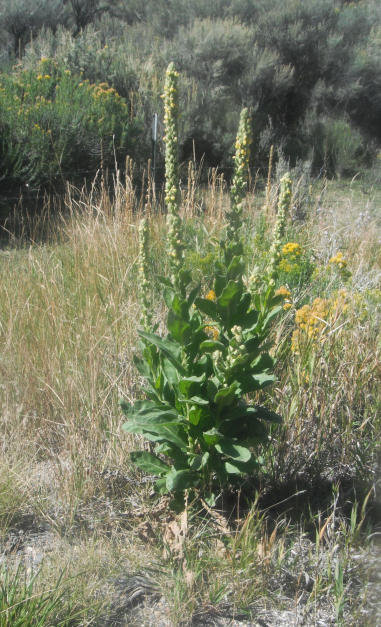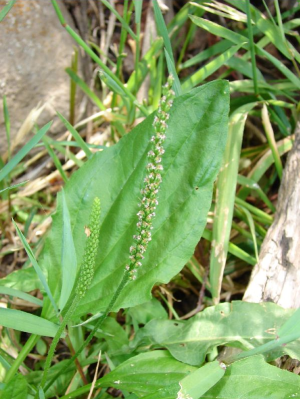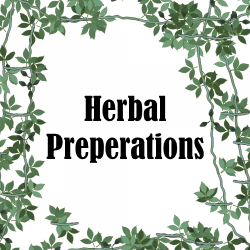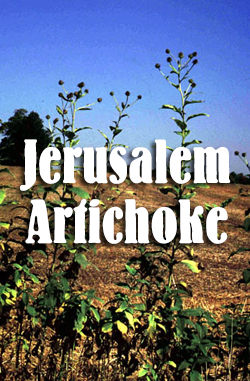Common Plantain
(Plantago Major)


Common Plantain (Plantago Major):
Buckhorn, Chimney-Sweeps, English Plantain, Greater Plantain, Rat-tail Plantain, Rib Grass, Ribwort, Soldier's Herb
Description:
Recognized by the large radial rosette of mostly hairless leaves, with long slender flowered spikes reaching a height of up to 2 feet. Leaves or oval shaped long and range from 2 to 12 inches long and 4 inches wide, with 3 to 5 ribs with smooth edges. The green, pencil-shaped flower stalks occur from spring to fall
Flower:
Found beginning in the Spring and occurring through the Fall at the top of one of many green leafless stalks. Flowers numerous but small ranging from 1/32 to 1/8 in diameter, with very small bell shaped petals. Flowers are purple tinted green to white, fading to brown with age.
Fruit:
Oval shaped 2 celled pod that splits to reveal 5 to 30 seeds. These seeds are small ranging from dark brown to black
Root:
Has a short rhizome, with a thick yellow root stalk with extensive fibrous roots. Roots can spread to an area of up to 3 feet.
Food:
• The green fruit tastes much like a bland peanut
• Immature leaves are eaten raw in early spring as any other green
• Young leaves can be eaten raw or cooked, taste is rather bitter. Leave stems should be removed. Leaves can tenderized by blanching before eating.
• Dried seeds are ground to make a meal
• The green, oblong fruits taste like inferior peanuts
• Once the seed head dries seeds are used as thickener
• Whole seeds can be boiled and used same as a hot cereal
• Dried leaves can be used as a tea
Medical:
Plantain in the colonial days was known as one of the essential herbal ingredients in early medicines. It is a known diuretic, astringent and deobstruent, reducing swelling and itching.
• Applied directly to open wound a poultice of the leaves is of some value in stopping bleeding.
• Provides relief when leaves are rubbed on insects stings.
• Provides relief when leaves are applied to burns
• Poultice of the leaves and salt applied directly to from venomous snake bites
• A power made of the dried leaves mixed with water used to destroy worms




